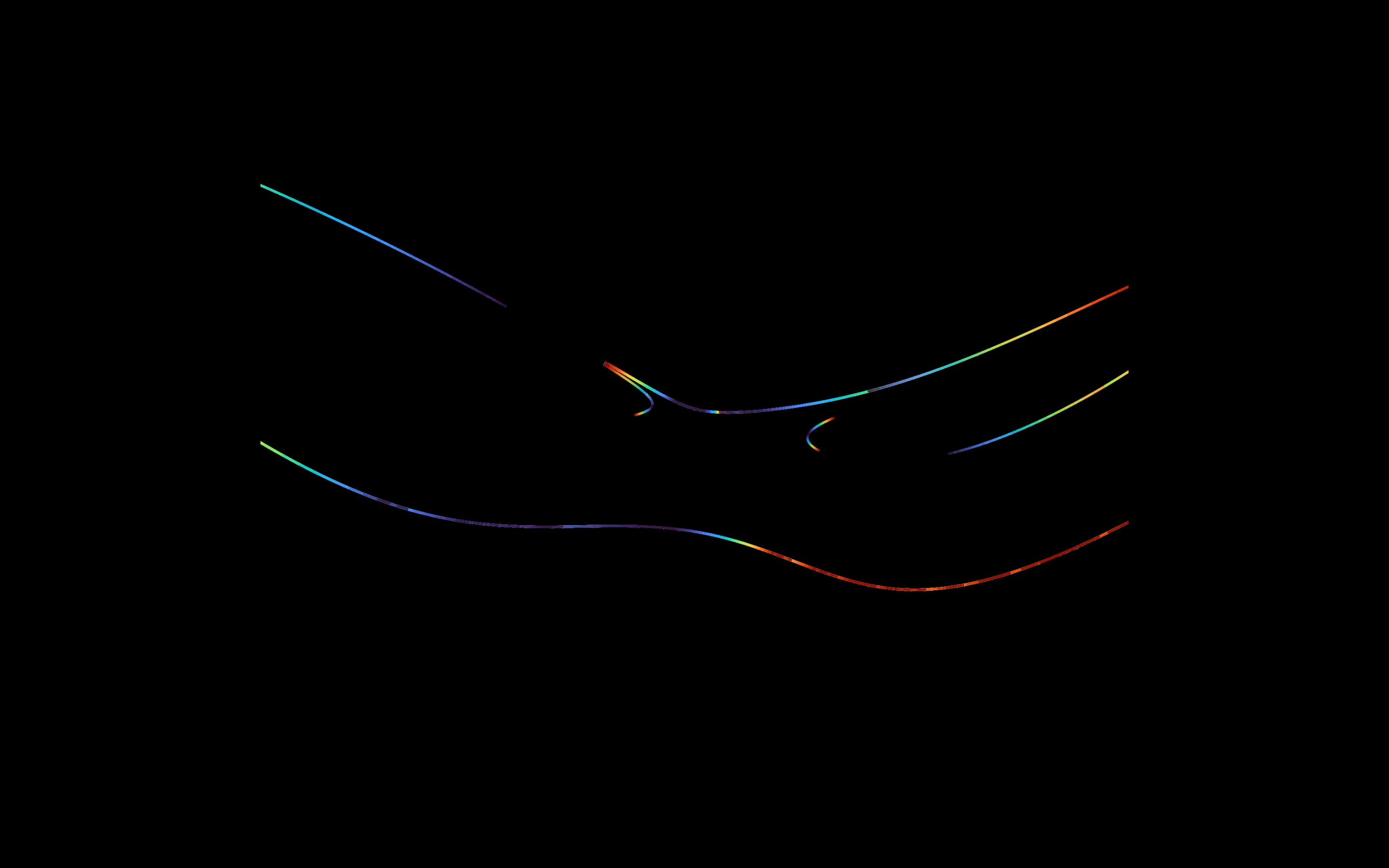Dadras Attractor
2025

Overview
The Dadras attractor is a lesser-known yet mathematically rich system that belongs to the family of continuous-time chaotic dynamical systems. It was introduced as part of ongoing explorations into nonlinear systems that exhibit strange attractor behavior in three dimensions. Like other systems in chaos theory, the Dadras attractor is defined by a set of ordinary differential equations and displays extreme sensitivity to initial conditions, resulting in trajectories that diverge rapidly yet remain confined within a bounded space. Although less studied than the Lorenz or Chen systems, the Dadras attractor offers a unique geometric form, characterized by long, sweeping arcs and sudden inflection points that make its structure appear fragmented and dynamic.
The Dadras system is governed by the following equations:
dy/dt = c·y − x·z
dz/dt = x·y − b·z
The parameters a, b, and c are used to shape the system's behavior, with values such as a = 3, b = 2.7, and c = 1.7 producing the characteristic chaotic motion. These equations define a flow through phase space, where each coordinate changes continuously over time based on its interaction with the others. The attractor’s form is subtle, lacking the tight spirals or scrolls seen in other systems, and instead unfolds through wide bands and sharply turning planes. This leads to a visual impression of fragmented motion, with long sections of apparent calm interrupted by sudden, unpredictable shifts in direction.
To render the Dadras attractor, I applied the Euler method to integrate the system numerically. Starting from an initial point, I iterated through the differential equations, computing the derivatives and advancing the state through time using small increments. The values of x, y, and z were updated step by step to construct a continuous trajectory. Because of the attractor's sensitivity to initial conditions, even minimal changes in starting coordinates resulted in visibly different curves, emphasizing the system's nonlinear nature. I repeated this process across multiple trajectories to better understand the attractor’s full spatial behavior.
Color was mapped to time in order to give the structure temporal depth, revealing the progression of each trajectory as it moves through the attractor’s invisible field. The resulting visualization shows a system in constant transition, with no point of rest or repetition. Despite its simplicity in definition, the Dadras attractor produces a shape that feels open, light, and mysterious. Unlike more well-known attractors, it does not draw the eye to a central coil or core. Instead, it traces a web of quiet motion, defined not by symmetry or repetition but by its unfolding complexity through space.
You can find my code repository here.